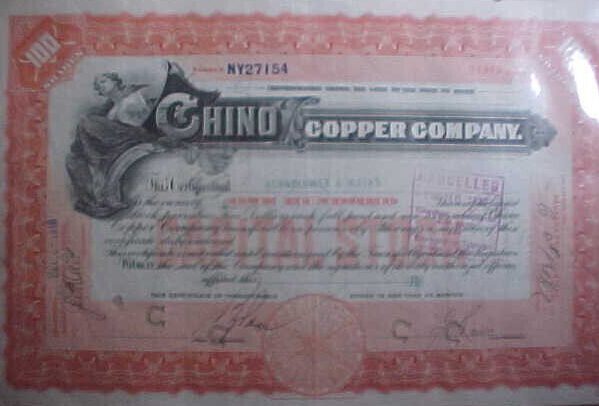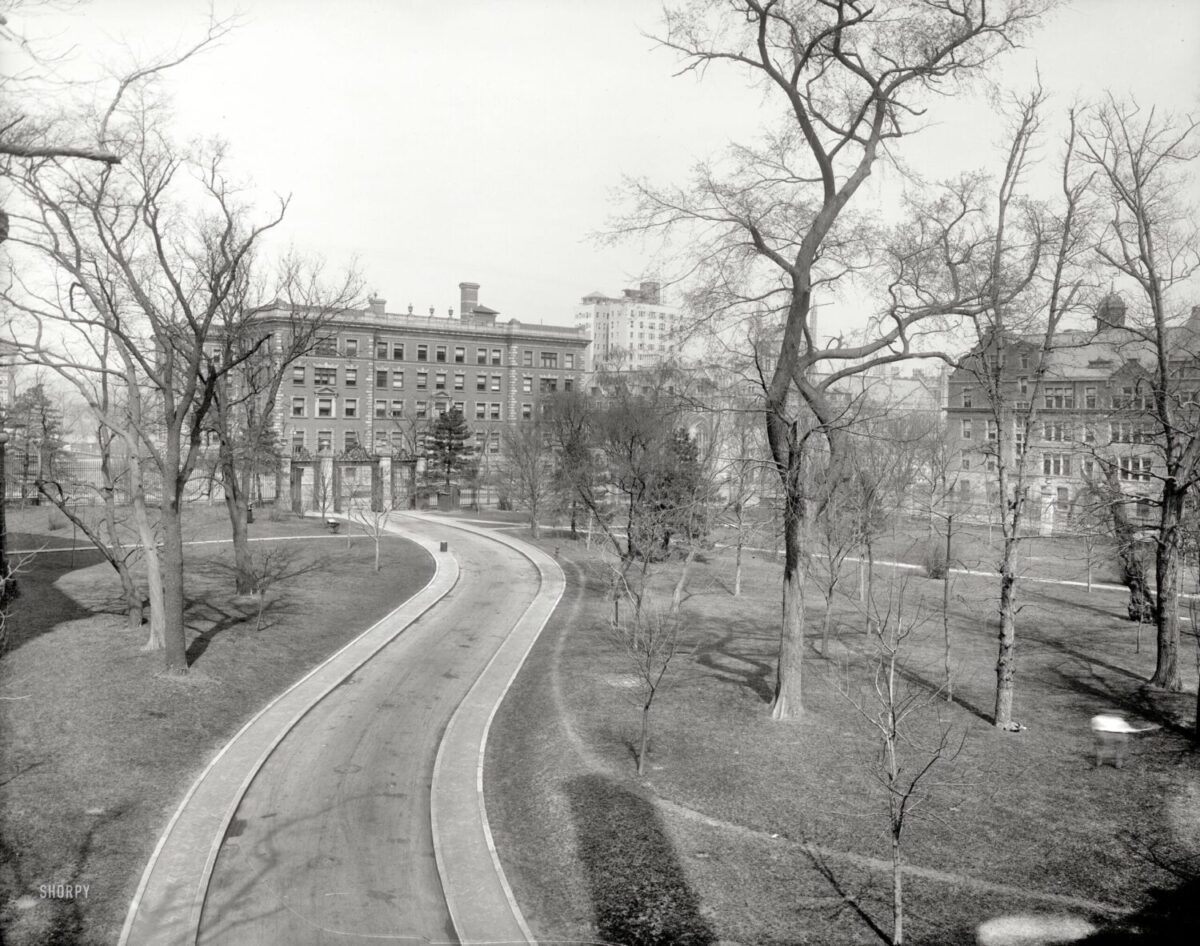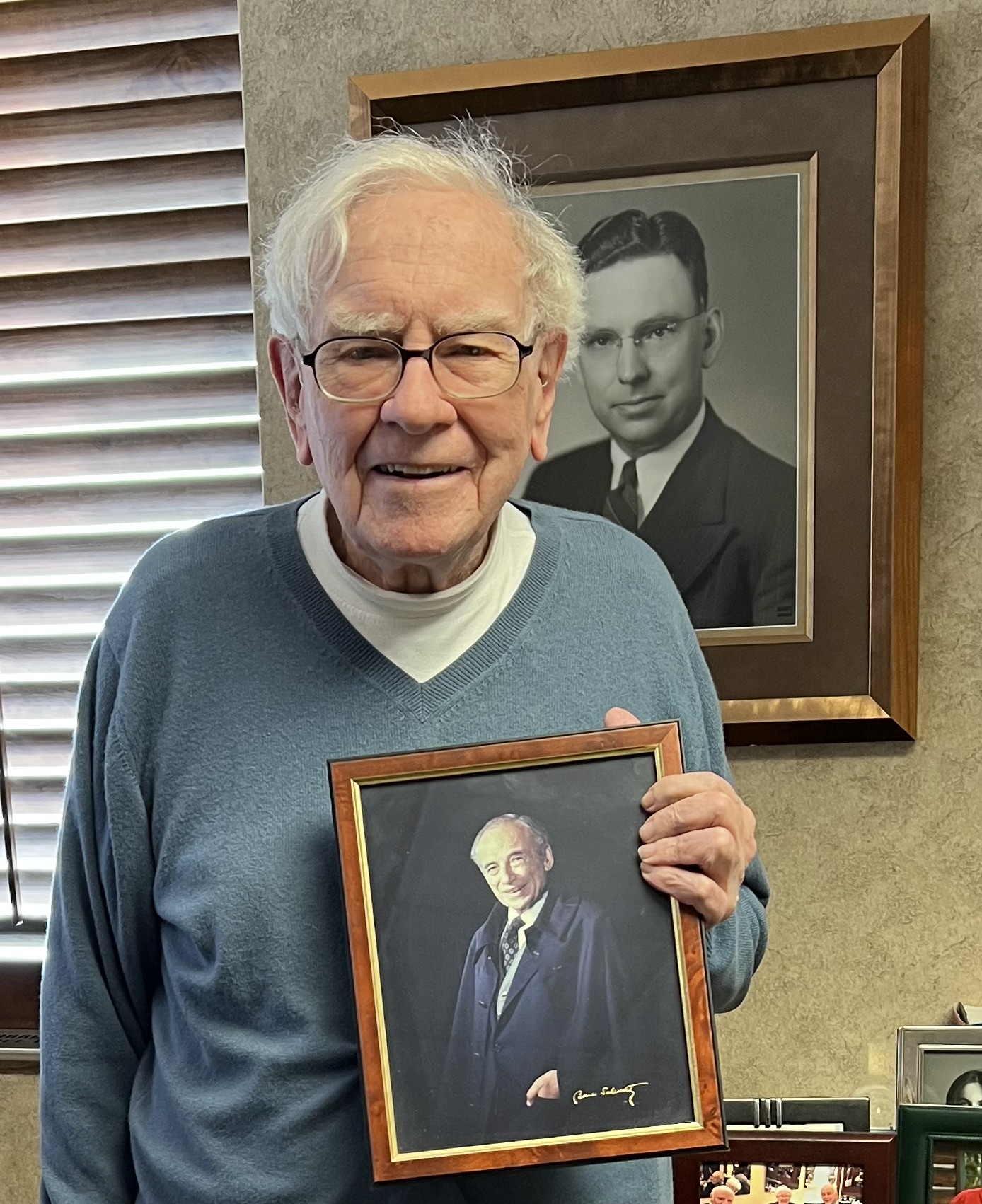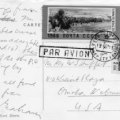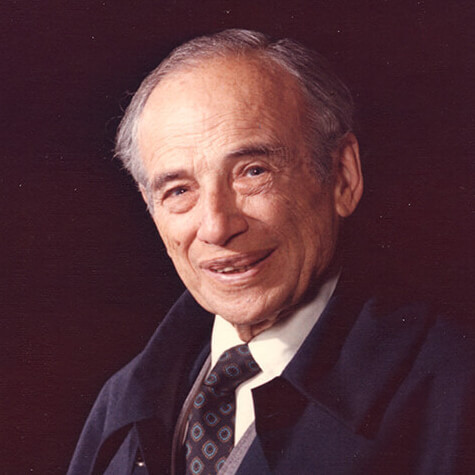Benjamin “Buz” Graham Jr., who died on March 12, holds a special place in my heart. He was the last surviving child of my grandfather, Benjamin Graham. As I mourn my Uncle Buz’s passing, I contemplate how his life stood in contrast to that of his father, the subject of this blog. At first glance, father and son couldn’t have been more different. Buz was a physician who weathered his own cancers with unwavering spirit. When I think of Ben, I think of Wall Street, value investing, Margin of Safety, teaching at Columbia, his amiable smile, and Warren Buffett. When I think of Buz, I think of his care for struggling patients, his worn gray sweats, surfing, paddleboarding, bicycling, his beaming smile, and his delight in trips to the dump. Was that friendly smile really all they had in common?
Buz’s Heartfelt Connection to Civil Rights
While Ben’s youth was defined by economic hardship and the duty to provide for his widowed mother, Buz felt a different calling. At nineteen, Buz entered the front lines of the civil rights struggle, joining Black activists in Mississippi to register Black voters. Freedom Summer volunteers faced extreme resistance, including arrest and violence, while raising national awareness and paving the way for the passage of the Voting Rights Act of 1965. Buz didn’t just view his actions as answering the call of justice. He shared a lifelong, loving connection with Lucy, who helped raise him while working in his family’s home. He knew in his heart that her humanity, like that of every Black American, demanded the same rights granted to white citizens.

Buz Graham with Lucy, who worked in the Graham household, helped to raise Buz, and influenced his life, in Beverly Hills, 1956.
The Illness That Shaped Buz’s Path
In his mid-twenties, a serious cancer diagnosis put Buz’s life at risk. Treatment at Stanford saved him, and the experience profoundly shaped his future. Buz resolved to become a physician, dedicated to giving care to others. For decades, Buz worked as a doctor of internal medicine and brought innovation to his local hospital, shining as a guiding light in his medical community. Upon hearing the news of his death on social media, over a hundred people commented, calling him “a treasure of a man,” “the most caring…compassionate person I ever met,” “a fantastic mentor,” and “an inspiration and as kind as they come.” Buz was described as “a wonderful, kind, thoughtful and generous person” and “one of the sweetest, funniest and kindest humans I’ve been fortunate enough to know. He showed up. He gave back. He made everyone around him smile and he made the world a better place.”

Dr. Buz Graham, Internal Medicine physician, ready to provide care in his scrubs, with penlight, stethoscope, and smile.
Buz Graham seems worlds apart from his father, Ben Graham, a titan of Wall Street. If we look closer, do unexpected parallels emerge?

Ben Graham published this article in The Magazine of Wall Street, v. 20, no. 11, 09/01/1917, at twenty-three years of age.
Buz had a deep commitment to helping others during their most vulnerable times, whether they faced illness, injury, or the end of life. Ben also had the urge to help people at a vulnerable time, when making investment choices. As soon as Ben began to learn how to invest, he wrote articles for brokerage firm clients, giving them the fruits of his astute analysis. As the market teetered after America entered WWI, a very young Ben wrote articles for The Magazine of Wall Street. Editor Rodney G. Klein regards them as timeless classics worthy of study in Benjamin Graham on Investing: Enduring Lessons from the Father of Value Investing.
Seeds of Service to Others, Planted Early
Where does this desire to help others come from? Buz’s calling arose from the gratitude he felt toward the Stanford doctors who saved his life. They told him he had a fifty-fifty chance of surviving his cancer. He got fifty-five more years—time enough to raise a family, find meaning in healing others, treasure a fifty-eight-year marriage, and see his grandchildren come of age.
Ben, in contrast, endured many trials that could have hardened him into a man driven by self-interest. Ben’s father Isaac died of pancreatic cancer at thirty-five, likely afflicted with the same gene that caused Buz’s predisposition to cancer.
But Ben’s troubles did not make him a selfish man. Ben witnessed his mother’s struggles to survive without a breadwinner and had a ringside seat when her “friend” promised to invest her last $5000 in U.S. Steel, ultimately stealing her life savings through a bucket shop scam. Ben was guided by a strong moral commitment to doing right by others—he became a financial adviser who would treat a widow’s savings as if they were his own mother’s. Ben, the youngest of three brothers, stepped up to support his siblings during tough times and took on the responsibility of caring for their mother for the rest of her life.
Buz Graham’s Checkered Boyhood
Benjamin Graham was fifty-one when he had Buz in 1945 with his third wife, Estelle. Ben holds his son Buz Graham, age two, in Brooklyn, New York, 1947, before they moved to Scarsdale.
As a young boy, Buz lived with his parents in Scarsdale, New York; his father commuted by train to Manhattan to manage his hedge fund at Graham-Newman. When we last encountered Ben, he was married to his first wife, Hazel, with whom he had five children. After their twenty-year marriage ended in divorce, he had a brief second marriage to Carol. We now find him in his third marriage, this time to Buz’s mother, Estelle, whom I called “Grandma Estey”. In Scarsdale, Estelle was a second-grade class parent at Fox Meadow School, the public elementary school Buz attended.
Historian Leslie Chang, in a recent piece for the Scarsdale Historical Society, adds dimension to Buz’s early life by revealing Ben’s dual teaching roles—at Columbia and the Scarsdale Adult School, where Warren Buffett also taught. We learn that Ben added a “$10,000 Ping Pong Room” to his home, a game Buz played as a teen.

Benjamin Graham’s former residence at 7 Harcourt Road, Scarsdale, New York, 2025. As a boy, Buz lived here with his parents in the 1950s. Photo courtesy of Johan Monge.
In the summer of 1954, a family tragedy struck Ben, marking the beginning of a profound shift in his life—a story that will unfold in a future post. In 1956, Buz was just eleven when his father, at sixty-two, left Wall Street behind and moved the family across the country to Beverly Hills, California.
611 North Maple Drive, Beverly Hills—purchased by Ben Graham in 1956 and the home where Buz grew up. A circa-1963 Lincoln Continental is parked out front, most likely Estey’s car.
Sorting through Warren Buffett’s Benjamin Graham files, I came upon this letter from Ben to Warren, which describes the excitement of moving into their new Beverly Hills home.

Benjamin Graham wrote this letter to Warren Buffett shortly after Warren left New York to return to Omaha and Ben settled into his new home in Beverly Hills.
In his warm depiction of Estey—suggesting she would “blush at the compliments you and Susie are paying her”—Ben seems to be reaching for light after a period of darkness. He urges Warren and Susie to visit so he and Estey can show the Buffetts their “new domicile.” Mr. Buffett told me that Susie and Estey were “fast friends,” and that the Buffetts visited the Grahams, or Estey alone, on many occasions.
In the summer of 1956, my family stayed with Ben, Estelle, and Buz, joining them on outings to Disneyland and Marineland of the Pacific. The cross-country move required Ben to leave his position at Columbia Business School, and he immediately began teaching security analysis without pay at UCLA’s Graduate School of Business Administration. Ben tried to make a new beginning with his family, but healing remained out of reach.
What Kind of Dad Was Ben Graham?
When Joe Carlen, author of Ben’s biography The Einstein of Money, asked Buz “what kind of father Graham was while he was growing up,” Buz replied: “Well, I would say that he was a little preoccupied.” He revealed:
“When we were living in Beverly Hills, I think [Ben] pretty much spent the whole day in his study. We had a study in the back garden and he’d be there most of the time…I’d go and ask him something and it would take a few seconds while he sort of came from wherever he was to deal with my question. So he was kind of somewhere else.” Buz Graham, The Einstein of Money, p. 269
As recounted by Dr. Bernard Sarnat, Ben’s neighbor and the husband of his first cousin Rhoda, and reported in Carlen’s biography, Ben was known to rise from a table of a dozen rich and famous guests to return to the solitude of his backyard office, to work on “something abstract.” Retired from Wall Street and relieved of the pressure to work, Ben Graham remained an aloof husband and father.
Unsettling Tension in Buz’s Home
His father’s triumphs loomed large in Buz’s mind: Ben was a trailblazer in finance, a prosperous man, and a figure of near-mythic regard among colleagues and students. Yet none of these attainments gave his father joy or well-being. Buz perceived that his father’s brilliance and success hadn’t shielded him from loss, nor from the unraveling of his third marriage. When I asked Buz about his parents’ relationship, he told me “they fought all the time.” Ben’s biographer Joe Carlen cites Ben in his Memoirs calling Estey the “severest critic of his driving.” Ben, too, must have felt the strain of Estey’s expectations. While Estey took great pleasure in hosting the wealthy and prominent, Ben had little appetite for such performances, preferring the quiet refuge of his study to the role of a Wall Street celebrity.
The Father Departed, the Son Endured
After witnessing the discord between his parents, Buz soon felt the deeper hurt of his father’s absence. At twelve, he watched Ben walk away from their family, settling into simple dwellings in the elegant locales of Aix-en-Provence and La Jolla, California. For Buz’s mother, the greatest heartbreak came when Ben built a new life with Marie Louise (“Malou”), a French woman with whom he had fallen in love. False stories swirl around this relationship, disseminated by otherwise trustworthy observers who were either judgmental or misinformed. I will explore this topic in a future post. In my view, Ben at last found someone with whom he could open his heart and experience a gentle harmony he had never known before. During my teens and twenties, I spent a lot of time with them and, through their example, came to believe that love could be both secure and filled with affection.

Ben Graham with his teenaged son, Buz Graham, circa 1962.
Ben’s choice of La Jolla for one of his small homes may have stemmed from a desire to be near Buz—something Aix didn’t provide. Still, I have the impression that the teenaged Buz saw his father infrequently, and the two had few opportunities for real connection. On a memorable 1962 ski trip to Mammoth, Buz broke his leg on the slopes and waited a long time for Ben to visit him in the hospital. A nurse informed him that his father had also been admitted—for a heart attack. The two were eventually wheeled together for a visit, and both went on to recover. On one of Buz’s visits to La Jolla, Ben offered to buy the motel where he was living (before Ben purchased a modest La Jolla condo) if Buz wanted to manage it as a business. Ben likely hoped to see more of his son, but Buz said: “No thanks, Dad.”
Buz Follows in His Dad’s Footsteps
Buz’s son told me he thinks of Buz as a boy who grew up in the affluent enclave of Beverly Hills, a gifted student who could have attended an Ivy League college and lived a life of wealth and prestige. Buz knew deep down that that wasn’t the life he wanted to live. This quote from Ben underscores the soulful leaning the two men shared:
“My natural inclination, I believe, was always away from the material and towards the intellectual and even the spiritual side of life. But the difficult conditions of my childhood existence affected me… I became too conscious and respectful of money. I took it for granted that the primary mark of success in life lay in large earning and large spending.” Benjamin Graham, The Memoirs of the Dean of Wall Street
At the same age as when Ben had launched his Wall Street career, Buz drove a Good Humor truck, its jingle drawing kids like a magnet. Their paths converged in the 1960s, when both men left Beverly Hills behind. Father and son both saw that “large earning and large spending” wasn’t the road to happiness. Both rejected materialism in favor of searching for deeper intellectual and spiritual meaning. Buz lived frugally, wore old clothes, and traveled the world, initially without a home of his own. Ben discovered a life partner in a European woman, and in a moment of quiet reflection at a Krishnamurti gathering in Switzerland, Buz did the same, meeting his Dutch-born wife.
Kindred Spirits Giving Back

Front cover of The Intelligent Investor by Benjamin Graham, 1949.
I’m moved by Ben’s unwavering urge to share his investment wisdom—a desire born of his wish to spare others from financial pain. Ben reached over a million readers with his iconic book, The Intelligent Investor, which Warren Buffett has called “the best book about investing ever written.” Today, seventy-five years on, Wall Street Journal columnist Jason Zweig advances Ben’s mission with a new edition of The Intelligent Investor. Likewise, Ben shared his knowledge generously in the classroom, teaching finance to eager learners at Columbia and UCLA.
Just as Ben became a fund manager, writer, and teacher who gave others the gift of financial health, Buz became a physician who gave others the gift of physical health. (Buz loved to teach and wanted to be a teacher in his retirement, but pancreatic cancer along with bladder and prostate cancers dashed that dream.) In different spheres, both found fulfillment and purpose through giving back.
Buz Outshined Ben in Marriage and Friendship
Early trauma played a role in Ben Graham’s three marital failures. Only in his final two decades did Ben find a true and loving partnership with his heart’s companion, Marie Louise. Buz grew up in a home marked by separation—but he proved that a child of a fractured marriage can build lasting love, sharing nearly six decades with his wife. As Buz faced multiple cancers in his final five years, their bond deepened, marked by quiet closeness and his wife’s tender devotion.

At their 1967 wedding, Buz beams at his new bride, while his separated parents, Ben and Estey, share a rare moment of unity in celebrating their son’s happiness.
Ben often reflected in his memoirs that he lacked close friends and “chums.” In contrast, Buz forged three close friendships—one with his cousin—during his high school years, and those ties endured for a lifetime. Each year, Buz and his wife hosted a Thanksgiving celebration that brought together two of those friends and their families at Buz’s home.
Exemplars of Strength and Resilience
I’m in awe of the extraordinary blend of toughness and resilience Ben and Buz displayed. No matter the tragedy or blow, Ben picked himself up and carried on. Buz suffered a different kind of blow—life-threatening cancers at twenty-four and seventy-four. No matter how excruciating the symptom, how interminable the ER visit, or how drastic the weight loss, Buz found the grit to keep going. Buz rose from his bed, rose to look into his wife’s eyes, rose to visit with his beloved children and grandchildren, rose to swim in the pool or grab his hiking poles and walk up the drive. My grandfather and my uncle inspire me with their courage and strength.
From Aloof to Affectionate: A Journey of Emotional Growth
Buz described his father Ben as “preoccupied.” Ben was closed off, refusing to be a threatening parent like his own father but remaining emotionally unavailable like his mother. Ben was a man of his time—a time when the father worked while the mother, and in well-off families, women employed in the home, raised the children. How amazing that, when writing his introspective “Self-Portrait at Sixty-Three,” Ben saw the wall he’d built around his heart and willed himself to open to love and connection. Within his limitations, he did—with his “priceless Malou, who comforts my old age,” and with family members, including Buz and his wife.
When I showed up unannounced at his door in Aix-en-Provence, unkempt from months of camping, Grandpa Ben and Malou welcomed me and my boyfriend. Ben had evolved to become more available to the people close to him. I can attest that while he remained a devoted and joyful scholar, he responded to interruptions to—say, his translation of The Iliad–with a smile. When I spent time with him after he left Beverly Hills, Ben never got up mid-meal to retire to his work table. He relished our presence and talked with gusto about an astonishing array of topics, from Odysseus’s journey, to the words Goethe gave to Helen of Troy in Faust, to the mathematical secrets of his signature “pick a card, any card” trick.
Buz: Breaking the Cycle
Buz became a cycle-breaker, a man who shows us that a boy raised by a distant father can grow into a caring dad and grandfather, passing on that love to his children, who in turn become loving parents themselves. Buz spent playful and meaningful time with his kids and became the primary caretaker of the grandson he and his wife raised.
Buz, the physician who once came home tired from twelve-hour shifts to retreat into a private sanctuary, became the patient who rallied, calling forth his might to join us at the table, to smile and ask about the family, the kids, the grandkids. He wasn’t engrossed in his symptoms, his pain, his life being cut short, his losing the strength to ride fourteen miles on his bike. He summoned his robust life force to be fully present—eyes crinkling with goodwill, his interest palpable, his self-deprecating humor shining through.
The King of Chitchat
To his children and grandchildren, Buz didn’t say “I love you,” but he welcomed them to his bedside when he was losing ground, listening, smiling, and enjoying their nearness. In his last months, this formerly distant doctor grew to love company so much that he called himself “the King of Chitchat.” His daughter scheduled one guest for 11 a.m. and another for 2 p.m., giving him the chance to bask in his visitors’ affection and delight in his newfound ease with conversation.
Ben and Buz: A Legacy of Kindness and Generosity
Warren Buffett surprised me when he said that what he most appreciated about my grandfather was Ben’s kindness and generosity. In his tribute to Ben in The Financial Analysts Journal, 1976, Buffett waxed poetic about his mentor, saying “there was an absolutely open-ended, no-scores-kept generosity of ideas, time, and spirit.” In person, Buffett marveled at how Ben freely shared stock tips with competitors attending his courses—even though their buying the same stocks could reduce Ben’s own profits. As I revisit the outpouring of messages on social media following Buz’s passing, what moves me most is how consistently people—from fellow doctors to casual acquaintances—point to the same two defining traits. It warms me to think that Ben passed those qualities on, not just to Buz, to my mother (his eldest sister), and others in our family, but to me as well. Ben even helped inspire his student, Warren Buffett, to become the most generous philanthropist in history. Now, I find joy in passing that same spirit of kindness and generosity on to you, my dear readers.
